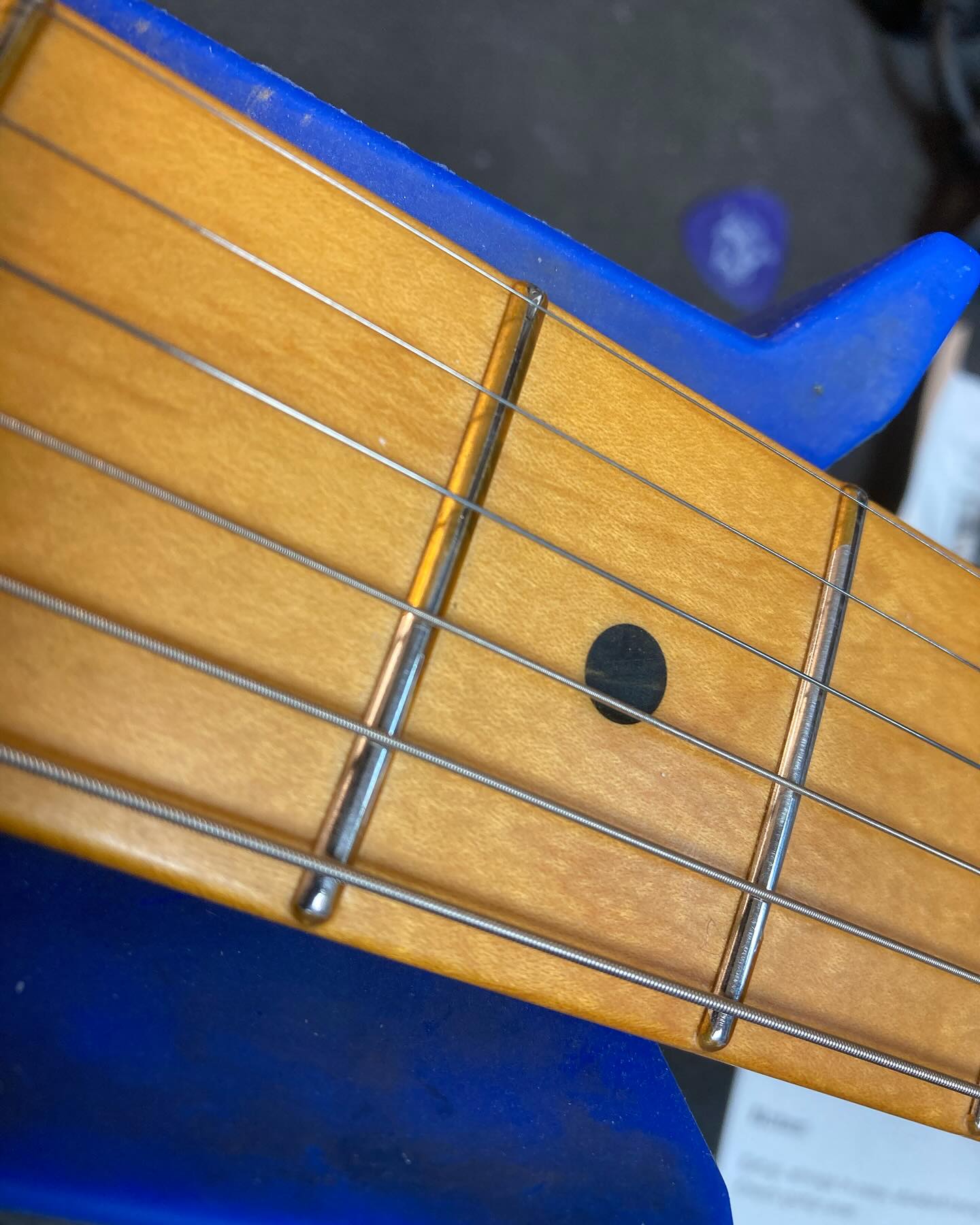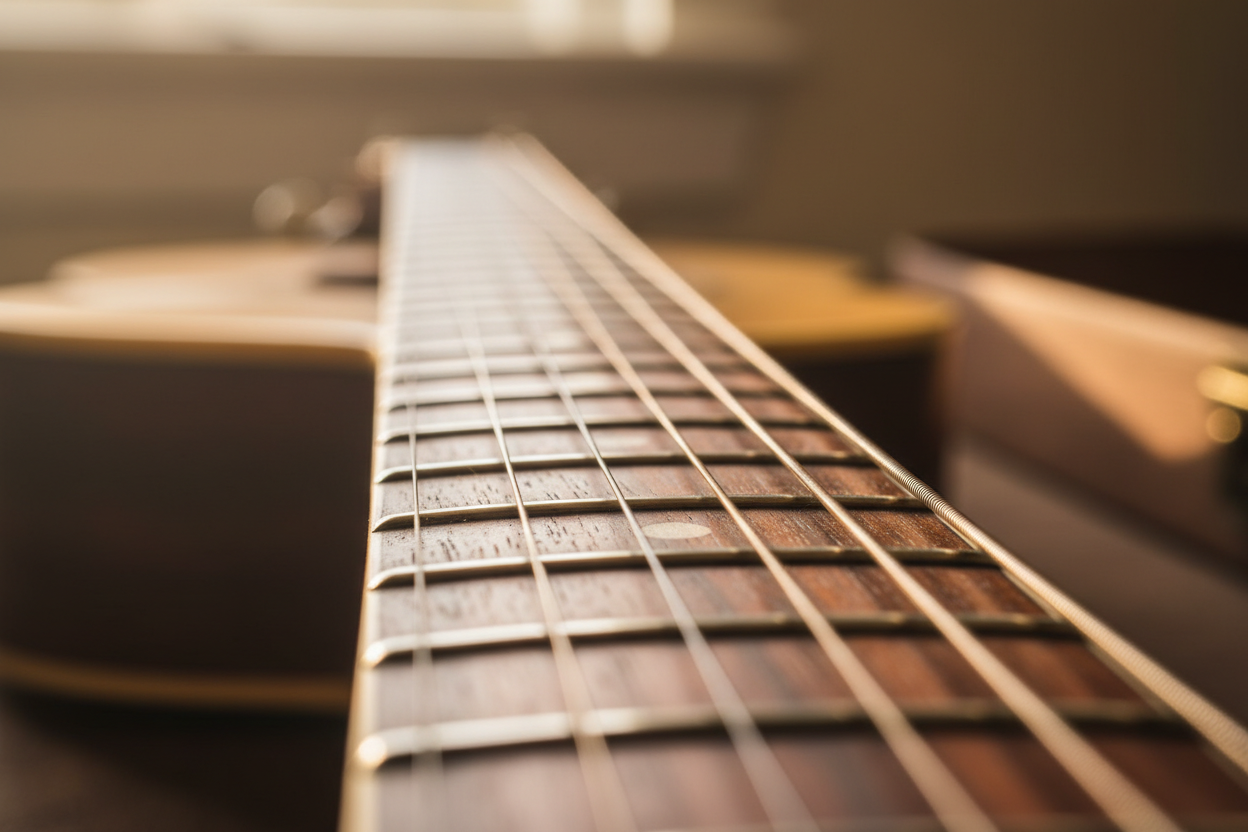As guitarists, we often focus on our instrument's tone and playability, but an often-overlooked issue could be affecting your guitar's performance: poly finishes on maple fretboards. This article aims to shed light on this common problem and its impact on your playing experience.

Understanding Poly Finishes and Their Impact
Maple fretboards are favored for their bright, clear tone and durability. However, some manufacturers apply poly finishes over the frets, which can introduce several issues:
1.Tone and Sustain Issues
Poly finishes, whether polyurethane or polyester, create a barrier between the strings and the frets. This coating can dampen your guitar's natural sustain and tone, making your instrument sound less vibrant. The poly layer diminishes the resonance that vibrates freely through your guitar's body.
2. Playability Problems
A smooth fret surface is crucial for effortless bending and vibrato. When frets are coated with poly, they can become rough and uneven, interfering with your ability to perform smooth bends and vibratos. This finish disrupts the natural feel of the frets and affects playability.
3. Aesthetic Concerns
Over time, poly coatings on frets can wear away, leaving an uneven appearance. The poly often remains on the sides of the frets where the strings don't make contact, creating an unsightly look and making your instrument appear poorly maintained.
The Shortcut Some Major Manufacturers Take

This issue isn't exclusive to off-brand guitars; even some major manufacturers use poly finishes on frets as a cost-saving measure. While this practice may save time and money, it compromises the quality of the instrument.
The Right Way to Handle Poly Finishes: A Case Study

Thankfully, some guitar builders do it right. Godin, for example, avoids spraying polyurethane all over the frets. Instead, they apply thin coats of finish on the fingerboard before installing the frets. After the finish is applied, the frets are carefully leveled, crowned, and polished, and the ends are filed smooth. Finally, they apply a finish to the back of the neck to complete the process. This meticulous approach avoids shortcuts and ensures a high-quality finish that improves the guitar's appearance and playability.
How to Address Poly Finish Problems
If you suspect that your maple fretboard has a poly finish affecting its performance, here's what you should know:
- Avoid Amateur Repairs: Removing poly finishes is a delicate process that requires expertise. It involves carefully scoring each side of the fret with a blade, followed by scraping and sanding off the poly. To avoid damaging the frets and fretboard, this should not be attempted by amateurs.
Seek Professional Help:

- For our local customers, Guitars on Main offers a specialized service called "Setup Supreme & Poly Detox." This service removes poly coatings from a guitar's frets and includes a comprehensive setup. If you are not local, find a reputable luthier with experience in fretwork who can handle the issue properly.
Conclusion
Poly finishes on guitar frets can affect your instrument’s tone and playability. Being aware of this issue is important for maintaining your guitar’s performance. Removing the poly finish from your frets can reveal your guitar’s true voice, enhancing its tonal quality.
For local customers, Guitars on Main offers the Setup Supreme & Poly Detox service to address and correct poly finish issues, helping to uncover your guitar’s authentic sound. If you’re not local, we recommend finding a skilled luthier who can provide the expertise needed.
Taking these steps can ensure your guitar remains in good condition and performs to its full potential.




